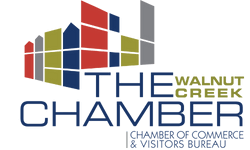Sewer line clogs can wreak havoc on your home, causing unpleasant odors, backed-up drains, and even potential water damage. When faced with this issue, prompt action is crucial. But here’s the burning question: should you tackle the problem yourself or call in a professional? Understanding the causes of sewer line clogs and the available solutions is essential for homeowners. Whether it’s dealing with root buildup or fixing kitchen fixtures, we’ve got you covered.
Table of Contents
ToggleDIY Unclogging Methods
You may wonder if you should tackle the problem yourself or call a professional. If you’re considering the DIY route, there are a few unclogging methods that you can try before reaching out to a plumber.
Home Remedies
One popular DIY method involves using baking soda mixtures. A mixture of baking soda and vinegar can help dissolve minor clogs, while baking soda and hot water can be used as a preventive measure. These remedies are effective for small obstructions and can be easily done with ingredients found in most households.
Another simple technique is flushing hot water down drains regularly. This helps prevent build-up by dissolving grease and preventing it from solidifying in pipes. By incorporating this habit into your routine maintenance, you can keep your sewer lines flowing smoothly.
Mechanical Solutions
For more stubborn clogs, mechanical solutions may be necessary. Using a plunger is an effective way to dislodge minor clogs in toilets or sinks. Remember to create a tight seal before plunging and apply gentle pressure to avoid damaging the pipes.
If plunging doesn’t work, drain snakes can be used to remove stubborn clogs deep within pipes. These tools come in various sizes and types for different pipe materials. However, it’s important to note that using drain snakes requires skill and expertise. Professional plumbers are trained in safely and effectively using these tools.
Professional Solutions Comparison
There are two main options: DIY or calling a professional. In the previous section, we discussed DIY unclogging methods that you can try on your own. However, if those methods fail to clear the clog or if you’re dealing with persistent or recurring issues, it’s time to consider calling in the experts.
One of the professional solutions for sewer line clogs is trenchless repair methods. These techniques minimize damage to your property and offer a faster and less invasive solution compared to traditional methods. Two common trenchless repair methods are pipe lining and pipe bursting. Pipe lining involves inserting a new liner into the damaged pipe, creating a smooth inner surface. On the other hand, pipe bursting involves breaking apart the old pipe while simultaneously pulling through a new one.
Calling a professional plumber is essential when you’re faced with complex clogs or recurring issues. They have the knowledge and tools necessary to handle these situations effectively. Professional plumbers can diagnose the root cause of the problem and provide long-term solutions that address any underlying issues.
Cost Considerations
One of the key factors to consider is the cost. Understanding the expenses involved can help you make an informed decision about whether to tackle the issue yourself or hire a professional.
DIY vs Professional Expenses
For minor clogs, opting for do-it-yourself (DIY) methods can be more cost-effective. Simple remedies like using a plunger or a drain snake are often sufficient to clear small blockages. These DIY solutions are generally affordable and readily available.
However, severe sewer line clogs may require the expertise of a professional plumber. In such cases, hiring a pro can be necessary to ensure that the problem is resolved effectively and efficiently. While professional services come at a higher cost than DIY methods, they bring valuable experience and specialized equipment to handle complex clogs.
Estimating Repair Costs
The cost of repairing a sewer line clog depends on various factors, including the severity and location of the blockage. DIY methods typically involve minimal expenses as they mainly require basic tools or household items. On the other hand, hiring a professional plumber can incur higher costs due to labor charges and any necessary replacement parts.
To get an accurate estimate of repair costs, it’s advisable to obtain multiple quotes from different plumbing professionals. Comparing these quotes will give you an idea of what each service provider offers and how their prices differ.
Preventing Future Clogs
Regular maintenance is key to preventing sewer line clogs in your home. By taking a few simple steps, you can avoid the headache and expense of dealing with a clogged drain.
One effective preventive measure is flushing your drains with hot water on a regular basis. Hot water helps to break down any buildup or residue that may be accumulating in the pipes, keeping them clear and flowing smoothly. Using enzyme cleaners can help to break down organic matter and prevent it from causing blockages.
Being mindful of what goes down your drains is also crucial for preventing clogs. Properly disposing of grease, food scraps, and hygiene products can go a long way in keeping your sewer lines free from obstructions. Grease, in particular, should never be poured down the drain as it can solidify and create stubborn clogs.
Installing drain screens is another proactive step you can take to prevent common blockages. These screens catch debris before it has the chance to enter the pipes, reducing the risk of clogs forming. Educating household members about what should not be flushed down the toilet or washed down the sink is essential as well.
The DIY Approach
You may be wondering if you should take the do-it-yourself (DIY) approach or call a professional. While calling a pro is always an option, there are some instances where you can attempt to unclog the sewer line yourself.
Before reaching out for professional help, it’s worth trying some key steps for unclogging on your own. Start with simple DIY methods such as using a plunger or a drain snake to dislodge the clog. These tools can often clear minor blockages and restore proper flow in the sewer line.
If these basic methods don’t work, you can try using chemical drain cleaners specifically designed for sewer lines. However, it’s important to follow safety precautions when working with these chemicals. Wear gloves and protective eyewear to avoid any contact with your skin or eyes. Make sure not to mix different cleaning agents as they can produce harmful fumes.
In more complex cases, such as stubborn clogs or tree root infiltration, it’s advisable to consult a professional plumber who has the expertise and specialized equipment to handle these situations safely and effectively. They may use techniques like hydro jetting or pipe relining to resolve the issue without causing further damage.
Remember that safety should always be a priority when attempting any DIY projects involving sewer lines. Turn off power sources near water fixtures before starting any work to prevent accidents from occurring.
Maintenance Importance
Regular inspections by professionals can detect potential clogs before they become severe. By scheduling routine check-ups, you can keep your sewer lines in optimal condition and prevent costly repairs in the future. Think of it as a proactive approach to maintaining your home’s sewer system.
Investing in preventive measures not only saves you money but also preserves the value of your property. Timely professional interventions prevent extensive damage and expenses that may arise from neglected sewer line issues. By avoiding major clogs, you ensure that your home remains a valuable asset for years to come.
Taking care of your sewer lines is crucial. Preventive maintenance helps identify minor issues early on, which can be fixed before they escalate into more significant problems. This proactive approach prevents the need for expensive repairs or even complete replacements down the line.
Conclusion
So, should you DIY or call a Professional solutions comparison, cost considerations, preventing future clogs, the DIY approach, and maintenance importance, it’s clear that both options have their pros and cons.
If you’re confident in your abilities and have the necessary tools, taking a DIY approach can save you money and provide a sense of accomplishment. However, keep in mind that tackling complex sewer line clogs without proper knowledge and expertise can lead to further damage and costly repairs. On the other hand, hiring a professional ensures a thorough and efficient resolution to your clog problem, but it comes with a higher price tag.
Ultimately, the decision boils down to your comfort level, budget constraints, and the severity of the clog. Consider consulting with a professional for an assessment before making a final choice. Remember, your home’s sewer line is a vital component of its functionality, so it’s crucial to prioritize its maintenance and address any issues promptly.
Experience the Best in Sewer Line Clog Solutions with Garcia Plumbing and Home Restoration!
At Garcia Plumbing and Home Restoration, we recognize the inconvenience and potential hazards that sewer line clogs can present in your home. Our team of skilled professionals, renowned for their expertise in Sewer Line Clog Solutions, is committed to ensuring your home’s plumbing system functions smoothly and efficiently.
Our focus at Garcia Plumbing and Home Restoration goes beyond merely addressing issues; we strive to enhance the overall health and safety of your living spaces. We’ve earned a stellar reputation in Contra Costa County for our unwavering commitment to quality, our deep-rooted expertise, and the trust we’ve built with countless satisfied customers. Don’t let sewer line clogs compromise the comfort and safety of your home. Reach out to us today for top-tier Sewer Line Clog Solutions and experience the peace of mind that comes with a well-maintained plumbing system!




